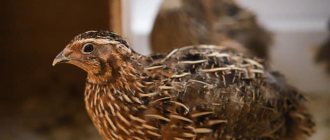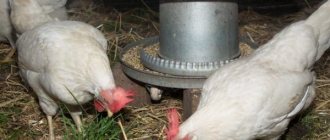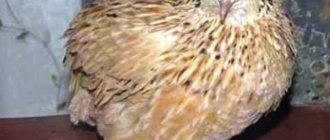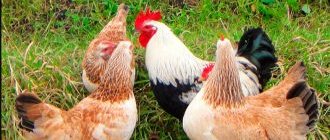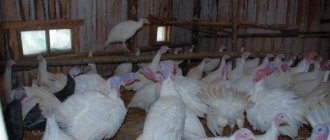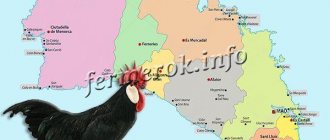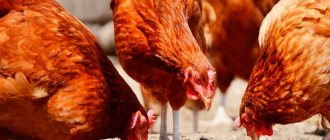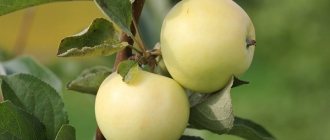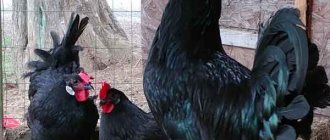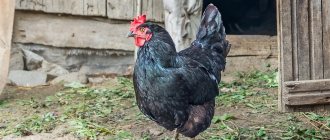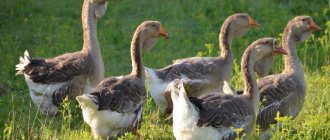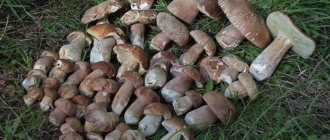Recently, quail breeding has gained popularity among Russian poultry farmers. Products obtained from these domestic birds are in demand among consumers. White Texas quail has won particular love among farmers. Connoisseurs note the taste and quality of the meat of these birds. In addition, Texans lay larger (compared to representatives of other quail breeds) eggs.
A little about the breed
American breeders worked on the breed. The ancestor was the Japanese quail, and only large specimens were selected for selection. The breed got its white color by crossing a Japanese with a white English quail.
In appearance, the Texan is similar to the English representative. The breed is one of the promising ones, since the birds are unpretentious in their care and have low demands on their diet. Unlike Pharaohs, they quickly gain weight and have tender meat.
Today, Texas broiler is grown everywhere not only in America, but also in central Russia.
Useful tips
In matters of breeding, you need to listen to valuable advice.
- Take care of the optimal size of the room. If there is not enough space, pecking begins. With its excess, egg production decreases. There is approximately 50 cm2 of area per bird.
- Egg collectors should be installed in cages to avoid crushing and contamination of eggs.
- It is better to place drinking bowls and feeders outside the cage. This serves to reduce feed scatter and make cleaning easier.
- For the same purpose, litter trays should be installed under the slatted floor.
- For optimal egg production, you should breed female and male Texas quail in a 2:1 ratio.
- Eggs to be placed in the incubator must have been laid within the last week. The hen must be no older than 10 months.
- Immediately after birth, feed the chick with finely chopped eggs, and a little later with cottage cheese. Grind all food thoroughly in the very first days.
- When purchasing individuals, pay attention to the number of black specks. Let there be fewer of them, the skin of a plucked carcass will look more aesthetically pleasing.
- To avoid stress, do not allow other animals into the premises.
- Gender determination is best done by professionals. However, it is quite possible to determine by voice. The female cooes quite quietly, while the male makes loud sounds.
Appearance
A representative of this breed has white plumage; small dark gray spots on the head are allowed. At the same time, under the white plumage the skin has a pinkish color, and in places of spots it is gray. Therefore, when selecting young birds, chicks with a minimum number of spots are selected in order to improve the appearance of the carcass.
The bird's plumage is lush. The back and convex chest are well developed. A small head and short neck are discordant with a large, dense build. The eyes are round and black, the beak is beige, sometimes with a dark tip. The light pink legs are muscular.
Texas white quail: photo description and characteristics of the breed
Texas quails are slow, calm, inactive, lethargic birds and are distinguished by their endurance. Even day-old young animals jump and move around in the cage less than other breeds.
Note! Even experienced farmers are amazed by their moderate activity; there is much less noise from them, which makes them a good option for keeping them at home (apartment). Their wonderful character allows you to calmly add their smaller relatives to them.
Texans acquire feathers later than other breeds, and their molting begins in the period from 3.5 to 4 weeks and ends by 60 days.
White Texas Quail (Click on photo to enlarge).
White Texas Quail (Click on photo to enlarge).
Despite the fact that the Texas breed has common roots with wild and English quails, it stands out among them by its characteristic features.
The main external features by which you can recognize a Texas quail:
- The plumage is predominantly fluffy and white, but there are dark spots.
- Strong physique.
- Compared to the body, the head is not large and the neck is short.
- Wide back and convex chest.
- The beak is flesh-colored, darkened at the tip.
- Dark eyes.
- Muscular and short legs.
- The skin under the plumage is light with a yellowish tint.
Texas quail chicks are not hardy, so caring for them requires special attention. This is compensated by the fact that they are not fussy eaters and gain weight and height very quickly.
Note! For two females in a herd, at least one male is required. The weight of a living female is from 350 to 450 grams, the weight of a male is 350-400. With intensive feeding, the weight can reach half a kilogram.
Advantages and disadvantages of the breed
The breed has both significant advantages and disadvantages.
The positive aspects include:
- The birds gain weight quickly and have a high carcass yield at slaughter (approximately 260 g). Males weigh 360 g, females - 450 g. Individuals are often fattened to a maximum weight of 550 g.
- The carcass has an attractive appearance and the meat is tasty.
- The feather is easy to pluck.
- An unpretentious bird to keep, easy to care for.
- They are not shy and have a calm disposition.
- Females have virtually no problems with the oviduct.
- They begin to lay eggs early - from the age of two months.
However, the breed has no less disadvantages:
- Low or average egg production, but there should be no questions here, since the breed is of the meat type. Quail eggs are laid large, they can weigh up to 20 g. On average, the weight of one egg is 12-14 g. Often there are two yolks in one egg. However, such eggs are only suitable for food; eggs weighing 10-11 g are selected for incubation.
- Due to their phlegmatic nature, males show little activity towards females; due to such a cool attitude towards the opposite half, problems arise with breeding, since egg fertilization is low. Therefore, there should be 1 cockerel for every 2 females.
- The hatchability of chicks is also not encouraging and averages 60%.
- Chicks are born weak, intolerant and require careful attention. Survival rate is 70-80%.
- High feed consumption.
- It is impossible to distinguish a female from a male right away; you will have to wait until they begin to lay eggs or learn to identify them by other signs.
Breed characteristics
Texas quail are distinguished by their white color with a slightly yellowish tint, diluted with black spots on the fluffy feathers.
The physique is characterized by large powerful legs, a chest, and a wide back with an arched line. The birds are stocky with a protruding chest.
Adult Texas white quails weigh up to 400 - 450 grams. Moreover, the weight of the plucked carcass is reduced by 4 times. Males are a little lighter - up to 360 grams. The leg muscles are highly developed to support such mass. The beak is light with a darkening at the end, the neck is short, the head is medium-sized, and the tail is short.
The description of the breed also includes behavioral characteristics. They are distinguished by their endurance. One can note calmness, inactivity, lethargy, and low fertility. Due to this, many males are required to reproduce (approximately 30% of the total number of Texans).
Eggs are laid from 2 months. They are somewhat larger than other breeds. Reproduction is carried out through an incubator.
They are not adapted to incubation on their own.
Advantages
A number of advantages make this breed especially popular:
- rapid increase in height and weight;
- ease of breeding and maintenance;
- attractive presentation of carcasses, compact size;
- low susceptibility to diseases;
- tasty healthy meat of high quality (dietary);
- nutritious eggs, larger than those of other quail breeds (their weight is 12-14 g).
Texas quail eggs have healing effects (improving brain activity, increasing immunity, strengthening bone tissue, stabilizing the gastrointestinal tract).
Flaws
There are relatively few disadvantages:
- high food costs;
- poor fertility, low egg production;
- low activity of males;
- difficulty in early sex determination (before egg laying);
- inability to hatch eggs independently.
These small nuances do not play a significant role.
How to distinguish a female from a male?
People with a good ear for music who have already heard male and female “trills” of quails can distinguish them by their voices. In males it is shrill and sharp, in quails it is more melodic and melodious, reminiscent of a quiet purr. Unable to figure out the sounds made by birds? Then there is a more practical way.
Chicks go through puberty at five weeks from birth. At this age, it is already possible to distinguish the sex of individuals by the shape of the genital organs. To do this, take her and turn her tummy towards you. Near the cloaca the feathers are spread apart. In females, this zone has the shape of an elongated slit; in males, the cloaca is rounded, and if you lightly press on the sides, a white-colored liquid appears.
Breeding white giants
Incubator for quail eggs
The content does not require any special knowledge compared to other breeds. On the contrary, Texas quail is distinguished by calmness and unpretentiousness.
Already at the age of five weeks the weight reaches about 150 grams. Broiler quail consume no more feed than other breeds.
Breeding can be carried out in a private yard, a small barn with insulation and ventilation, without drafts.
Broiler quails require an incubator, since they do not hatch eggs . Eggs should be kept in a cool place until incubation.
Maintenance and care
Texans are housed in any room or structure. The main thing is that there are no drafts, it is warm, light and dry.
Lighting
It is better to make windows on the south or east side. Quails do not like direct sunlight; they are curtained with light cloth or netting or placed in cages away from windows. They also feel good under artificial lighting; 2 lamps of 40 W each are enough. Daylight hours are maintained up to 16-17 hours a day.
Ventilation
Be sure to install ventilation so that the air circulates in the barn and does not stagnate. Birds will also enjoy a small courtyard for walking. It is fenced with a fine mesh to prevent those who like to feast on them from entering the territory of the quails - these are cats, rats and other living creatures, and they make a canopy that protects the livestock from direct sunlight. The exercise pen should be at least 10-15 square meters. m. When kept in this way, quails do not experience stress and anxiety, and feel as if they are in their own element.
Cells
If there is little space, then cage keeping is practiced. The cages are installed in rows in several tiers.
When calculating, it is necessary to take into account that one bird needs 20-30 cm of personal space (ideally 50 cm), the height of the structure should be 40 cm, and not 20 cm as for other smaller breeds. The optimal cell size is 35x45 cm, so that the quail can easily stick its head through.
Each cage is equipped on the outside with a drinker and a feeder, and egg collectors are made, since laying hens can easily crush eggs on the floor. This design makes caring for birds much easier.
To make it easier to clean out droppings, pull-out plastic and wooden pallets are made underneath.
Quails fattened for slaughter are divided by gender - into cockerels and laying hens, and kept separately from each other.
Read about how to make a quail cage with your own hands here.
Temperature
Texas broilers react acutely to sudden changes in temperature. A comfortable temperature for them is +18-22 °C. If the thermometer drops lower, the birds begin to freeze and huddle together to keep warm. Such crowding sometimes leads to their injury.
At temperatures above 22 °C, birds become completely lazy and passive. The signal that quails are hot is their behavior. They breathe frequently and keep their beak open.
Air humidity
It is also necessary to control air humidity. Its optimal indicators are 60-70%. As humidity increases, birds gain less weight, lay eggs worse, and often get sick, resulting in an increased mortality rate.
Temperature, humidity and daylight hours
Texas quail react painfully to temperature changes; optimal conditions for them are about +20 degrees. When the temperature drops, the birds begin to huddle in groups, trying to keep warm, and can injure each other, and when the temperature rises, they become even more inert and lazy.
For good rates of weight gain and growth, it is imperative to choose the optimal temperature; the first days in a chick’s life are especially important. From days 1 to 4 the temperature should be 36-37 degrees Celsius, until the 10th day - 32-33 degrees, then until the 15th day we carefully reduce it to 25 degrees, and for adult livestock the temperature can be at least 18 degrees Celsius, so as not to egg production indicators deteriorated. Reduce the temperature gradually, while monitoring the quails’ reaction. If there are problems with the temperature, Texas white broiler quail will show you this by their behavior: if they are cold, they will behave restlessly and huddle together, but if it is high, the birds will open their beaks and breathe quickly.
Important! Be sure to monitor humidity levels, it greatly affects the normal development and maintenance of birds. Be especially careful when reaching the desired temperatures; humidity may suffer. You can install water containers indoors. Humidity levels should be between 60 and 70 percent.
If we talk about hatched chicks, then after birth they are transplanted into a brooder and provided with round-the-clock lighting. From 15 to 30 days they provide up to 20 hours of daylight, then 17 hours.
The light in the room where birds are kept should be dim. Exposing birds to direct sunlight is contraindicated. Bright light can lead to stress, pecking and cannibalism. Give them 16 hours of daylight. Some breeders leave the room in semi-darkness, leaving only the drinking and feeding areas illuminated.
What to feed?
The Texas Giants are famous for their excellent appetites. To gain weight quickly, your diet must be balanced. One quail eats up to 40-50 g of feed per day, that is, for a population of 100 birds you will need up to 4-5 kg of feed per day. Industrial high-quality feed is purchased for them.
Unlike chickens, quails immediately begin to eat food for adult birds, only in a more crushed form. But to accelerate the rate of weight gain, they are fed according to the following scheme:
- First, hatched quails are given food rich in proteins:
- chopped boiled eggs;
- cottage cheese rubbed through a fine sieve;
- fermented milk products - yogurt, kefir.
- Next, greens, finely ground crackers, and food for the chicks are introduced.
- For older chicks, feed is added, as well as foods rich in calcium - chalk, shells, crushed shells and bone meal.
- The menu of females that have begun to lay eggs must include crushed raw sea fish and salt.
Birds should always have fresh water at room temperature in their drinking bowls from birth so that they can drink freely at any time.
Features of feeding and diet of Texas white quails
For any meat breed, it is very important to have good weight gain. Therefore, it is necessary to provide birds with a protein, high-calorie diet. For good weight gain and productivity of poultry, vitamin and well-balanced nutrition is used. Every day, 100 animals consume 4-5 kilograms of food, per individual from 40 to 50 grams of food.
Note! For quail, water and feed should be available in the brooder 24 hours a day. Small quails, unlike chickens, are ready to eat from the first days of life.
The simplest option is chicken starter feed, which is ground into flour. Also, from birth you can give a boiled and finely chopped egg, yogurt, non-sour cottage cheese and greens. After a week, you can introduce grated vegetables and plants into your diet. From the 21st day of life, you can already switch to 3 meals a day; you no longer need to grind the feed.
From the 30th day, you can already use compound feed for adult laying hens, or special PK-1 (P) also 3 times a day. We can say that from a month of life, the diet of birds does not differ from the diet of an adult. Sexually mature Texas quails that have already begun to lay eggs (this is from 45-50 days) can eat 2 times a day.
An adult quail of this breed eats approximately 45 grams of feed per day (for example, PK-5 or PK-2). You can also include in the diet of an adult bird: grains (wheat, oats, corn, barley), greens (alfalfa, young nettles, clover), mineral supplements (chalk, shells, eggshells), fish oil, pieces of vegetables (carrots, boiled potatoes ). Mineral supplements are given 2-3 times a week. And, of course, clean and fresh drinking water must always be available.
Note! The water temperature for quail should be at room temperature. Do not give cold or overheated drinks.
Feeding occurs in two phases, this is the best option for gaining weight. Hatched chicks immediately need the first phase of nutrition; they are given about 300 Kcal with a large amount of protein food.
Main products:
- Well-boiled and chopped eggs.
- Cottage cheese, pureed on a sieve.
- Crushed crackers.
- Kefir, yogurt.
- Food for quail chicks.
- Greenery.
In the second phase, calorie content increases by 100-200 Kcal, and mixed feed is added, including feed intended for chickens:
- wheat;
- corn;
- barley.
Breeding Texans
Laying hens of this breed are completely devoid of the brooding instinct; even when kept in an enclosure, no more than 3% of females become hens. Therefore, breeding Texans is only possible with the help of an incubator.
When incubating, there are several nuances that should be taken into account:
- For incubation, it is better to take eggs from young females who are not yet 10 months old. In more mature individuals, the number of fertilized eggs decreases several times.
- Eggs are collected within 7 days and stored at +18-22 °C.
- Chicks hatch on days 16-18, but usually a mass “birth” occurs on the 17th day.
- It is not necessary to turn the eggs during incubation. This does not in any way affect the successful hatching and health of the chicks in the future (according to the observations of specialists).
- Newborn quails are left in the incubator for several hours so that they dry completely, and only then are they moved to a special room - a brooder, where the optimal temperature is maintained for them (32-34 ° C). Otherwise, the feathers will dry out quickly and become covered with a hard crust.
For two-week-old quails, the ambient temperature begins to gradually decrease, and by the end of the third week it is brought to +26 °C. Four-week-old young animals are transferred to cages or a common place where the temperature is maintained within 22-24 °C.
Breeding, incubation features
Due to the fact that the birds are kept in captivity, in cages, they have completely lost the instinct to hatch. Even if raised in enclosures, only 1 to 3 percent of hens can become brood hens. Therefore, be prepared for the fact that without an incubator the reproduction process simply will not work for you.
On a note! You can purchase an incubator or make it yourself. Choose eggs no older than seven days, from birds up to 10 months old.
Before you put the eggs in the incubator, you need to keep them cool and dark, but only outside the refrigerator. The incubation period for Texas quail is 16-18 days. After the chicks have hatched, leave them in the incubator for a couple of hours, they definitely need to dry out.
If quails that have hatched are immediately transferred to a brooder, then in dry air their feathers will quickly dry out and form a dense crust around their body. After two hours, you can transfer the chicks into a brooder, with the temperature already set, which corresponds to their age (see above).
Diseases and prevention
Unlike the egg and meat-egg breeds, Texans have a weaker immune system. Therefore, for prevention, starting from three days of age, they are given vitamin preparations. The birds are also fed with high-quality, balanced feed, calcium-containing foods and proteins. Be sure to monitor the quality of drinking water. It should not be musty, cold or heated. The sick bird is immediately separated from its healthy counterparts separately.
The most common diseases are associated with improper keeping of quails and lack of nutrients in their diet.
Birds are susceptible to:
- vitamin deficiency;
- cannibalism;
- baldness - loss of plumage.
Find more information about quail diseases and their treatment here.
How to distinguish a sick bird from a healthy one?
To understand which bird is sick, you need to observe the behavior of the birds:
- A sick bird becomes lethargic and usually hides in a corner.
- Shows no interest in what is happening around her.
- Refuses to eat, and sometimes to drink.
- Her feathers are ruffled, her eyes are half-closed.
- She throws her head back and stretches her neck.
- Pulls out feathers and pecks eggs.
Sick birds must be identified promptly and the cause of their poor health must be sought. Often, having eliminated the negative factors of maintenance or nutrition, the bird recovers without any consequences.
Description of the breed
A variety of quail, called Texas, was born as a result of selection carried out in the USA. Japanese and white English quails were used to breed these domestic birds. Representatives of the new breed received the white color from their English ancestors. The variety was released in the US state of Texas. This is where the name of these birds comes from. Other common species names are Texas pharaoh and Texas white giant.
The largest representatives of the Japanese and British were chosen to participate in the selection. And it is the latter that Texas birds owe their appearance.
As a result of crossing, very large individuals were obtained. Average weight is 450–500 g.
Now the breed is bred not only in its historical homeland. Birds are popular in many parts of our planet. In Russia, the Texas variety of quail is bred mainly in the central regions of the country.
Birds of this breed fledge later than their counterparts of other varieties. They molt at 25–30 days of age. Molting continues for a month.
Appearance
Representatives of the breed are known and popular due to their size. These birds are much larger than their counterparts. Description and main characteristics of the appearance of Texans:
- round body;
- developed back;
- wide, muscular chest, slightly protruding forward;
- pink beak.
When it comes to coloration, not all Texas quail exhibit perfect white plumage. No more than three spots of a dark tone are allowed on the body of birds.
The breed standard is a marking on the head and a pink beak. Individuals with deviations on these points are not allowed to breed in the breed.
Character
Breeders note the calm disposition of the birds. This is the main behavioral characteristic of birds of this breed. The activity of Texans can be judged by the behavior of the young animals. The chickens behave calmly and move slowly. However, it cannot be said that the chicks are lethargic. This is just a behavioral feature. This sedateness has become one of the reasons for the popularity of Texans among poultry farmers.
In addition, these birds are very peaceful and friendly. Therefore, proximity to other miniature breeds is quite acceptable. Another advantage of Texas quails is their silence, which allows them to be kept even in an apartment.
Productivity
Snow quail of the Texas breed are highly productive. Puberty in males and females occurs quite early. Therefore, farmers receive eggs from white giants faster than from other varieties. Laying hens lay their first clutch at the age of 1.5–2 months.
Females lay from 220 to 260 eggs per year. The average weight of a quail egg is 15 g. The record weight is 25 g. Peak egg production occurs at the age of 5–6 months.
Texan quail are raised for their meat. This product is famous for its dietary properties and excellent taste. The female weighs on average about 500 grams, the male - up to 450 grams. The birds are fattened until the individuals reach a body weight of 500–600 g. To obtain such a massive carcass, intensive fattening technology is used. Broiler quails are slaughtered at the age of 4 or 5 months, while the meat is still tender.
How much does it cost and where to buy a white Texas broiler?
If you are going to purchase this breed of bird, then choose a trusted seller so as not to be disappointed in the purchase in the future. The white Texas broiler is similar in appearance to the English quail, which is much smaller in size, as it is an egg breed. When purchasing, pay attention to the plumage; the fewer dark spots, the better - the carcass will have a more attractive appearance.
On average, the price of laying hens varies from 100 to 200 rubles, depending on age; the younger the individual, the cheaper it costs. So, the price for a daily quail is 40-60 rubles. You can also find hatching eggs on sale for 15 rubles per piece, but no one can guarantee that it is fertilized and that a Texan will definitely emerge from it.
Poultry is purchased from farms that breed them or from private owners.
The White Texas Broiler and the Pharaoh are two meat breeds that are available in the poultry market. Everyone decides for themselves which breed to choose. The main characteristics are presented in the table below.
| Breed/traits | Texas White Broiler | Pharaoh |
| Female weight (average), g | 450 | 300 |
| Cockerel weight (average), g | 360 | 250 |
| Egg production (pieces/year) | 200 | 220 |
| Egg weight, g | 15 | 18 |
This breed of quail is well suited for breeding and selling meat. The requirements are not too high, unlike many other breeds. The products are high quality, the business pays off quickly. But you'll have to tinker a little with breeding
0
0
Copy link
Texas white quail: characteristics of the breed and its breeding
Texas Whites are a meat breed of quail. They are valued because they quickly gain weight, the carcass has a pleasant appearance, and the meat has excellent taste. This breed has several names:
- albino broiler,
- texas giant,
- snow pharaoh,
- texas pharaoh,
- white giant.
Note! In Russia, breeders initially paid attention to the egg production of quails, but today priorities have changed, and poultry farmers are also interested in the issue of meat.
Texas white quail.
In one of the articles we talked about a quail farm and all the advantages of keeping quails at home. In this article we will talk about one of the most popular breeds in our country, Texas white quail .
Quail breeding as a business: (read more)
It is more pleasant for the consumer to see well-fed broiler carcasses on the table. Therefore, due to the fact that they gain up to 800 grams in carcass weight, and the eggs of laying hens are larger than usual, Texas quail has become a very popular breed. This is the largest meat quail breed currently known. The popularity of breeding this species is growing and is valued for its beautiful carcass, tasty and tender meat. Birds that are not demanding of space and intricate conditions are successful among novice poultry keepers.
Video
In the video we will learn tips on choosing a meat quail breed for home breeding.
Quail breeding is becoming more and more relevant, their popularity is growing year by year. Even in the Middle Ages, people appreciated their benefits and prospects.
Various breeds have been bred: meat, egg and egg-meat. And they are bred accordingly for the purpose of obtaining eggs and meat. Moreover, the second is preferable, since egg production is relatively weak (150-200 eggs per year).
White Texas quail is one of the most popular meat breeds.
Care and causes of quail diseases
Quails of the white giant breed are not demanding of special conditions of detention, but react sharply to their changes. Cage cleaning should be carried out daily, during which droppings are collected and the room and cages are disinfected. It is also worth paying special attention to the livestock; if individuals with unusual behavior are noticed in a flock, behaving sluggishly or, on the contrary, aggressively, then it is recommended to isolate such birds and search for the reasons for such actions of birds.
Because any deviations in the lifestyle of quails indicate the possible onset of a disease, which can be caused by the following reasons:
- poor quality food or lack thereof.
- dirty water or its shortage for all individuals in the poultry house.
- bright lighting or temperature inappropriate for the age of the quails.
- failure to comply with hygiene standards in the poultry house.
Quails respect a quiet and measured way of life, so any emergency situation can lead to dire consequences. The breeder is required to carefully evaluate and eliminate any factors that interfere with the correct appearance of the birds.
Features of keeping Texas quails
The content process is not complicated and quite interesting. The main thing is to equip the room and follow some rules.
Temperature
Optimal temperature is important, especially in the very first days of life, for quality growth and weight gain. After hatching, the chicks are moved to boxes or cages.
Favorable temperatures in degrees
| Age | Caged ℃ | Indoor ℃ |
| From birth to 10 days | 36-38 | 26-28 |
| 11-17 days | 30-32 | 23-25 |
| 18-25 days | 25 | 22 |
| After 26 days | 18-22 | |
It is recommended to reduce the temperature gradually, observing the reaction of the birds. If they are cold, they squeak and gather in heaps, which can lead to injury.
Air humidity
This indicator is a prerequisite for breeding Texas broiler quail. The average rate is 60-70%.
When the required temperature indicators are reached, the humidity often decreases significantly. Installing a container of water in the room will help in solving this issue.
Nutrition
Food intake must meet the requirements of balance and completeness, contain proteins and nutrients in sufficient quantities.
Recommended products include:
- chicken feed (up to 50 grams per day per bird, 4.5 kg per month per 100 birds);
- grains of corn, wheat, barley, oats;
- mineral supplements (shells, chalk, eggshells), vitamin supplements (fish oil);
- drinking water is fresh and clean, always available and changed frequently.
A large selection of special feeds can be found on sale.
Characteristics of nutrition of newborn chicks
A newborn Texas broiler should eat chopped vegetables (potatoes, carrots) and greens (nettle, alfalfa, clover).
From birth, chicks eat cottage cheese, eggs, curdled milk, and ant larvae. Then plant feed is introduced.
From a month onwards - the diet of an adult. When overfed, white quails are prone to obesity.
Lighting
The lighting intensity is recommended not bright, dim. Cages should be placed at a certain distance from windows.
Brightness causes stress in birds and, as a result, a decrease in egg production and egg pecking. After the birth of individuals, illumination should be provided around the clock, from 15 to 30 days - until 20 hours, then - 17 hours.
Place of detention
The premises must meet the following criteria:
- inaccessibility to predators;
- good ventilation with no drafts;
- windows facing east and south;
- low power lighting;
- the ability to provide temperature and humidity conditions;
- the cages are somewhat larger than for other breeds.
The optimal room size is 10 – 20 m2. There should be no sources of strong noise nearby. Cells should be purchased or made yourself. They can be placed one above the other.
It is convenient to keep young animals in cardboard boxes.
Nests or perches are not needed. The quails begin to fly to the floor.
A canopy should be installed next to the room, fenced with mesh to protect from birds, sun, and animals (rats, cats, dogs, etc.).
What is important is the absence of stress and closeness to their natural habitat.
Hygiene and diseases
Cages must be cleaned daily. It includes collecting litter, disinfecting cages and the premises as a whole.
Broilers should be examined at the slightest change in behavior . It is better to immediately distance a suspicious bird from the rest.
The following factors can lead to diseases:
- dirty water, poor quality food;
- injuries received;
- failure to comply with hygiene and ventilation standards.
In the very first days of life, chicks, who are not very hardy, require special care. Proper organization of feeding, warmth and dryness are important.
Video "Keeping White Texans"
Be sure to watch this video that tells you how to keep Texas White broiler quail.
Lighting
Quails of this breed love somewhat dim lighting. Too bright can damage them. As a result, the cages are placed away from the windows. Bright light and other irritants can cause stress in these birds, and this can lead to a decrease in egg production and even egg pecking. Likewise, you need to make sure that other animals, even cats, do not have access to the room; they can disturb the bird.
For lighting, one fluorescent lamp or 5 ordinary 25-watt light bulbs are enough.
Cells
The cages in which the Texas quail will be kept can be made independently or purchased in special stores. Since representatives of this breed are quite large, they need to be kept in larger cages than, for example, cages for Japanese quails. For 30 young individuals, a cage with a floor size of 90 by 40 cm is required, and the best height is 20 cm. If the stocking density is too high, then frequent fights are possible, leading to injuries and even death of weaker individuals.
The cages where broiler quails live must be provided with an egg collector, otherwise the birds will simply crush them. The floors in the cages are made of mesh, and trays for litter should be placed under them, this is necessary to facilitate cleaning.
To save space in the room, cages or cell batteries can be placed opposite each other. The bottom row should be raised above the ground by about one meter. This is done to make them easier to clean and collect eggs.
Young animals are usually raised in cardboard boxes corresponding in size to the number of heads. There should be at least 50 cm2 of floor space per bird.
Temperature
Broiler Texas quail, like all representatives of this species of birds, are sensitive to low temperatures and if they drop, they will begin to cluster and squeak. Such grouping is fraught with injury and even death of some individuals.
Optimum temperature +20C.
Humidity
Representatives of the Texas breed are susceptible to temperature fluctuations. 60-70% is considered the norm; in case of deviation from these limits, various negative phenomena are possible, from decreased egg production and weight gain to feather breaking.
Hygiene and diseases
It is advisable to remove droppings from the cages in which the birds are kept every day. Periodically disinfect not only the cells themselves, but also the entire room.
In turn, it is necessary to constantly inspect all individuals and, in case of the slightest suspicion of a disease, place it in a quarantine cage or box.
Diseases can be triggered by a variety of influences:
- poor quality food;
- injuries;
- stale or contaminated water;
- unsanitary conditions in the premises.
Feeding
Texas white broiler quail can be fed only high-quality, complete and balanced feed containing sufficient protein and other nutritional components. It’s very bad that our industry does not produce special food for quails, probably because this bird is just beginning to spread in our country. Perhaps in the future the situation will improve and any quail breeder will be able to purchase the feed his birds need without any problems. For 100 heads of quails of this breed, about 4.5 kg are required per day. stern.
Small quails need to be given food of animal origin, a little more than plant food. It can be:
- boiled egg;
- cottage cheese;
- curdled milk;
- crushed crackers;
- finely chopped greens.
You can also give compound feed that is fed to the chickens of another bird. This must be done until the chicks reach ten days of age. In the future, the share of plant food should be gradually increased; adding animal food is also acceptable.
From the age of one month you can feed them with mixed feed based on the following ingredients:
- corn;
- barley;
- wheat;
- cake;
- bone and fish meal;
- ground shell;
- salt;
- premix
Hygiene and diseases
Cleaning of cages is mandatory every day. Once a month it is recommended to disinfect the premises. Examine not the entire herd as a whole, but each individual individually to identify signs of disease. If you avoid inspections, you will face unpleasant consequences. The infectious individual should be placed in another cage and a veterinarian should be called. Diseases can be caused by various factors: low-quality or expired feed, dirty, stale water, any injuries.
Infectious diseases of quail include Newcastle disease, pullorosis, and psittacosis. Salmonellosis is considered common. The first symptoms that trigger immediate action are diarrhea and a strong putrid odor. Feather loss or complete baldness may occur. There are non-contagious diseases that develop in weak individuals.
Weight table
Texas white quail is characterized by rapid growth rates and increased weight. Because of this, the amount of meat will be greater. Like other breeds, the female weighs more than the male.
An adult bird weighs up to 500 grams.
On day 7, the quail already weigh 30 grams. At the age of 2 weeks, the weight is 250 grams. By 2 months they weigh from 400 grams. Up to 250 grams of pure meat is obtained from a carcass, which is considered a good indicator for a meat breed. The Texas breed is the most popular in the meat industry. The meat is not tough, tasty. Large eggs. The mass of eggs is 14-16 grams.
Productivity
Since quail belongs to the meat category, you should not expect high egg production from it. It ranges from 65 to 75 percent. The eggs are large, weighing 15-16 grams, but there are exceptions, and owners find eggs weighing up to 25 grams.
Egg production ranges from 200 to 220 eggs per year, respectively from 4 to 6 eggs per week.
Basically, this breed is bred to be raised and then slaughtered for meat. Quails quickly enter the period of growing up and begin to lay eggs early. They begin laying eggs at the age of two months. The most productive period is the 5th and 6th month, and after that it is recommended to replace individuals to improve performance. Texas breed hens do not have a developed brooding instinct at all, so they will need an incubator for their offspring.
General impression
AppearanceFeatures of breeding and cultivationProductivity
The bird's body is round, squat, with a developed chest and a wide back. The head is small, the neck is short, the beak is curved, light in color, sometimes with a dark tip. The Texas breed has rather long, developed legs that are light pink in color.
The plumage is lush, white, the breed standard allows for the presence of small black spots (up to three) on the head and back.
Like most breeds, Texas quail have larger hens than cockerels, but it is almost impossible to outwardly distinguish chicks by sex at an early age. The only reliable way to determine sex is by the shape of the genital organs of a bird aged one and a half months:
- in the female they look like a horizontal slit,
- The male has a round gland, which, when pressed, secretes a foamy secretion.
Due to a rather phlegmatic temperament, the fertility of eggs in the Texas breed is not the highest. To achieve acceptable performance, birds are kept in a ratio of 1 male to 2-3 females.
The brooding instinct is completely absent in Texas quails. Even when kept in open-air cages, no more than 3% of laying hens lay eggs. Therefore, the only way to breed the breed is to breed it in an incubator.
To create your own stock, it is recommended to purchase young individuals at the age of 50–60 days, since at an earlier age there is a risk of getting Texas English quail, which has a similar plumage, but is much more modest in size . If you have experience and a trusted supplier, you can also purchase hatching eggs and raised chicks. When buying day-old chicks, you need to remember that the survival rate of Texas quail chicks is 70-80%.
Birds are selected for breeding based on the following parameters:
- The weight of a male is from 380 g, females from 420 g. Birds with a lower or, conversely, a record high weight are not used for breeding.
- Good egg production and large eggs.
- Compliance with the plumage color standard.
If selection is not made, after several generations the birds become smaller and their productive performance decreases. The breeding herd is renewed every 5-7 months.
Advantages:
- thanks to the white plumage, the carcass has a light shade and excellent presentation;
- high carcass weight and rapid weight gain in young animals;
- calm, intimidating bird;
- Egg production is quite high for a meat breed.
Flaws:
- low activity of males and low percentage of eggs fertilized;
- relatively low hatchability and survival rate of chickens.
Texas quail meat is soft, tender and light in color. The meat yield from the carcass is 60–70% (about 260 g). The bird gains its maximum weight by 5 months, so it is not advisable to keep it for longer than six months. The productivity of laying hens decreases significantly after 10 months of laying eggs, so at this age they are also slaughtered for meat .
The breed is characterized by early maturity. When kept industrially, poultry is slaughtered at 45–50 days; by this age it already reaches a weight of 350–400 g.
Despite its meat orientation, the breed’s egg productivity is also quite high. A Texas hen can produce 200 or more large eggs per year. In some cases, the mass of eggs can reach up to 20 g, but on average it is 13-15 g.
Content
Texas quail have similar conditions to other species. However, the breed is less whimsical. Meanwhile, there are some nuances in the maintenance of the house.
First, monitor the temperature and humidity in the room. Temperature is a condition that determines how quickly an individual will grow. Just hatched chicks are placed in a cage with a temperature of 36 to 38 degrees. The cages are located in a room at 26 degrees. Such conditions are observed from hatching to 10 days. For adults, the favorable temperature is 18-22 degrees. The correct humidity is 60-70%; if the air is not humid enough, then place a container of water in the room where the birds are kept.
The cell plays an important role in the development of birds. Quail cages should be spacious so that each bird has enough space. You can either purchase them in a store or build them yourself. One adult quail needs 50 square centimeters. Cages must have ventilation, but beware of drafts, which can negatively affect the health of the birds.
Lighting affects the productivity of birds. Bright light can cause aggression and irritation, which can lead to pecking in the house. The younger the individual, the more light is needed. But this breed loves soft lighting. For young animals from 0 to 2 weeks, the light is maintained for 24 hours. In the future, 17 hours is enough for quails. 25 watt fluorescent lamps are suitable for this function.
The first sign of a lack of light is a decrease in appetite and egg production.
Valuable advice
Beginning poultry farmers often face problems when choosing and purchasing quails. The advice of experienced farmers who have been breeding representatives of the Texas breed for many years will help you understand all the nuances:
- When choosing, it is recommended to pay attention to the color of the chicks. Preference should be given to individuals that have no more than three dark spots in their plumage.
- Before purchasing, you should take care of where Texan quail live. It is necessary to prepare spacious cages to ensure a comfortable existence for pets.
- Representatives of the breed have weaker immunity compared to egg and mixed varieties. It is recommended to feed three-day-old chicks with vitamin preparations (Chiktonik) to strengthen the body’s defenses.
- It is impossible to determine the sex of Texan chickens. Sex differences will only be visible at 50–55 days of age. Therefore, it is impossible to calculate the sexual composition of the flock in advance.
- To distinguish a male from a female, you need to examine the genitals of the bird. In quails, the cloaca has the appearance of an elongated slit; in quails, the genitals are rounded; with light pressure, a light, foamy liquid is released from them.
- Those who independently breed Texans need to take care of the quality of the livestock. Individuals with defects in paws or beaks are rejected and slaughtered or put in a separate cage so as not to be allowed into breeding.
Texas white quail have several disadvantages, which are offset by one advantage - greater weight. The farmer needs to provide the livestock with spacious cages and a nutritious diet, and organize appropriate living conditions. In return, he will receive a lot of tender, tasty dietary meat in a short time.
